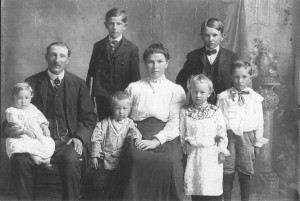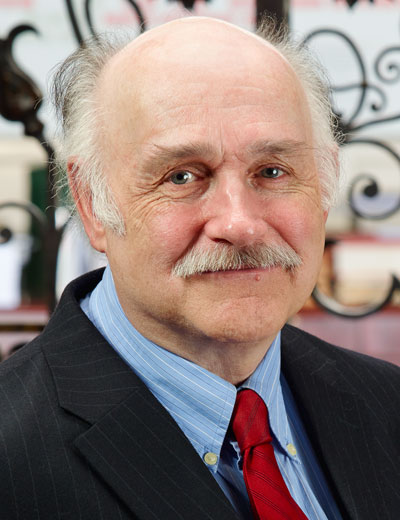 My mother's maternal grandparents Martin and Elizabeth (Heft) Schwindt and their family, including my grandmother Elizabeth standing second from right, in Nebraska ca. 1910.
My mother's maternal grandparents Martin and Elizabeth (Heft) Schwindt and their family, including my grandmother Elizabeth standing second from right, in Nebraska ca. 1910.
When I was young, my mother mentioned that in her youth her parents would sometimes playfully argue whether Norka was better than Balzer. When asked what that meant she explained to me that these were the names of villages in Russia. That confused me because I knew that she was of German descent. She explained that her German ancestors moved to Russia but eventually life became hard for them there, and after several generations they emigrated to the United States.
I wanted to know more about why they left their homeland to make such a long and difficult journey, especially after learning that the conditions they found in Russia were little better and in some cases worse than in Germany.
When I became interested in researching my ancestry in the 1980s there was not yet much information available on the internet and my mother knew little more about her family. At that time one of the best ways to make discoveries was to reach out to others on message boards who were researching the same surnames. I was extremely fortunate to be contacted by a number of people who were researching the same lines that I was. One of them, a woman with the same surname as my mother, knew that her ancestors were also Germans from Russia. While we were pretty sure we were related, we were not at that time able to determine how. But she did have a lot of background information on what difficulties they faced in Russia and some historical context.
Through this contact I found the American Historical Society of Germans from Russia. On their website I have found many articles and essays to aid my research, both genealogical and historical.
In 1762 Catherine the Great, a German princess who had recently assumed the throne of Russia, wished to establish her newly gained borders to the south and at the same time assist the German populace who had been ravaged as a result of the Seven Years War. Germany at this time was still a collection of small kingdoms and principalities. In 1763 Catherine issued her Great Manifesto, promising prospective immigrants religious freedom, exemption from military service, freedom from taxation for a minimum of 30 years, and free living quarters for six months after arrival, as well as free travel and expenses.
How could a poor and oppressed group of citizens refuse such an offer? The first wave of German emigrants from 1763–69 numbered more than 25,000, with many more to follow in subsequent years. My mother’s ancestors left Germany in 1766 and arrived in Norka almost a year later. Immigrants continued to arrive until the late 1800s.
Yet when they arrived in southern Russia there were no living quarters awaiting them. They lived in thatched huts in the summer and caves in the winter. Having no knowledge of the Russian language, they lived almost exclusively in German colonies. Moreover, when they first arrived in this sparsely populated area they were at the mercy of robbers and nomadic tribes to the south, which would frequently raid villages kidnapping and pillaging at will.
Gradually over the generations the promises made by Catherine expired or were reneged on by the government. The forced service into the Russian Army was likely the last straw for many of the villagers. A second cousin of mine (five times removed) became a minister for the reformed church and from 1864 until 1868 served as a missionary in Wisconsin before returning to Norka. It is said that he was instrumental in the later emigration of thousands of immigrants from Russian villages to the United States. The American Midwest, with terrain similar to the Russian Steppes, was an attractive destination for the colonists. My mother’s ancestors settled in Lincoln, Nebraska, as did many others; they gradually moved west to the city of Norfolk in the same state. Others settled in other areas of Nebraska, as well as the plains states of the Dakotas, Kansas, and Colorado. Eventually many of these migrated further west to the Pacific Northwest. By 1920, there were more than 300,000 of these immigrants and their descendants living in the United States.
One of the regrets I have is that the culture and customs of my great-grandparents did not survive in my family. However, through the efforts of the American Historical Society of Germans from Russia, whose mission includes preserving the rich history and culture of this unique group of people, I now have the opportunity to discover much more about my ancestors and pass the stories and traditions down to my children in hopes that they will do the same with their children.
Share this:

About Tom Dreyer
Tom has a Bachelor’s degree in Business Administration from Boston University. He has been a genealogical researcher for the past thirty years. His areas of interest are New England, Nebraska, Missouri and GermanyView all posts by Tom Dreyer →